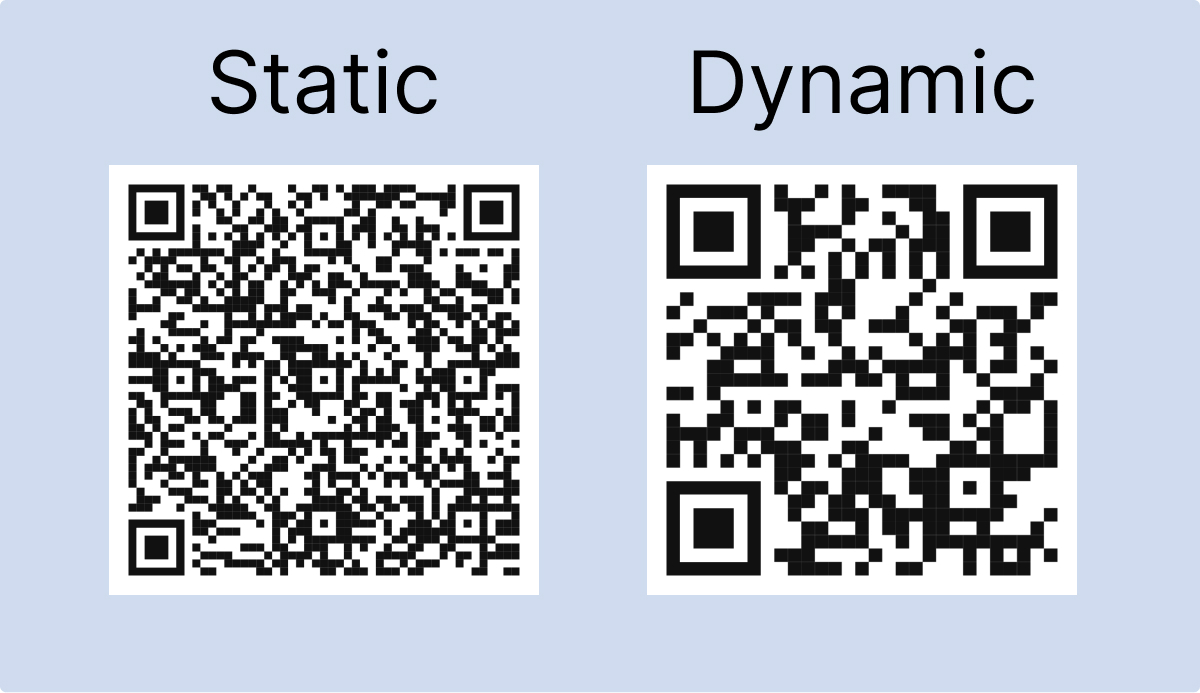Common in our digital day, QR codes act as links between the physical and digital spheres. Although static QR codes are still somewhat common, their improved functionality. Adaptability are quickly making dynamic QR codes rather popular. The main variations between dynamic QR codes and static QR codes are investigated in this paper together with the reasons why companies and marketers are using dynamic QR codes instead.
Static QR Codes
The most fundamental form of QR codes are static ones. Once produced, a static QR code cannot be altered with regard to data. Consequently, the URL or information connected to the QR code stays fixed always. Simple uses for which the content does not need to be updated—such as product packaging, business cards, or permanent signage—usually call for static QR codes.
What is a Dynamic QR Code?
Conversely, dynamic QR codes present a more sophisticated and versatile option. Dynamic QR codes provide data that may be changed and updated without altering the QR code itself unlike stationary QR codes. Dynamic QR codes are therefore quite flexible and adaptive since companies can change the content linked to the QR code or the destination URL at any moment.
Editability and Flexibility
Dynamic QR codes and stationary QR codes differ largely in their capacity to change the linked content. Dynamic QR codes let companies refresh the URL, alter the contents, or send consumers to other materials depending on campaigns or present necessity. For marketing initiatives including seasonal specials, event details. Time-sensitive information—that which calls for regular updates—this adaptability is quite valuable.
Tracking and Analytics
Dynamic QR codes stand out mostly for their tracking and analytics powers. Dynamic QR codes can gather information on the frequency of scanning, the locations of the scans, the devices utilized, and perhaps the time of day the scans happen. This comprehensive data lets companies get important understanding of consumer behavior and the success of their marketing initiatives. By comparison, stationary QR codes make it challenging to evaluate their influence since they provide no tracking or statistics.
Enhanced Security
Furthermore offering improved security elements are dynamic QR codes. Companies can guarantee that the information stays current and safe since the content connected with a dynamic QR code can be updated. Dynamic QR codes also provide an additional degree of protection and control by allowing them to expire following a designated period or number of scans. On the other hand, once created, static QR codes are fixed and cannot be changed. So, security concerns may arise should the information get compromised or outdated.
Cost-Effectiveness
Although creating dynamic QR codes could have more initial expenses than creating static QR codes, over time the advantages usually exceed the expenses. Updating the material without printing the QR code helps to cut waste and save printing expenses. Moreover, the knowledge acquired by means of tracking and analytics might result in more successful marketing plans, therefore enhancing the return on investment.
Customization and Branding
Greater customizing possibilities are provided by dynamic QR codes than by stationary ones. Companies can develop dynamic QR codes with their brand colors, logos, and other design details. Customizing helps improve brand recognition and renders the QR codes more aesthetically pleasing and interesting. Dynamic QR codes’ visual adaptability greatly enhances the marketing initiatives of a brand.
Integration with Other Technologies
Dynamic QR codes can interact easily with other technologies such mobile apps, marketing automation tools. CRM systems, and consumer relationship management solutions. By means of this connection, companies may provide their consumers more involved and customized experiences. For focused follow-up campaigns, a dynamic QR code might, for instance, link to a customized landing page capturing user data and then be linked with a CRM system. Static QR codes cannot provide such integration.
Conclusion
Dynamic QR codes and static QR codes differ fundamentally overall. Dynamic QR codes provide editability, tracking and analytics, improved security, economy, customizing, and flawless interaction with other technologies. These benefits make dynamic QR codes the better option for companies. Marketers trying to design more successful and interesting campaigns. Businesses may keep ahead in the cutthroat digital scene by knowing what is a dynamic QR code and using its advantages.


